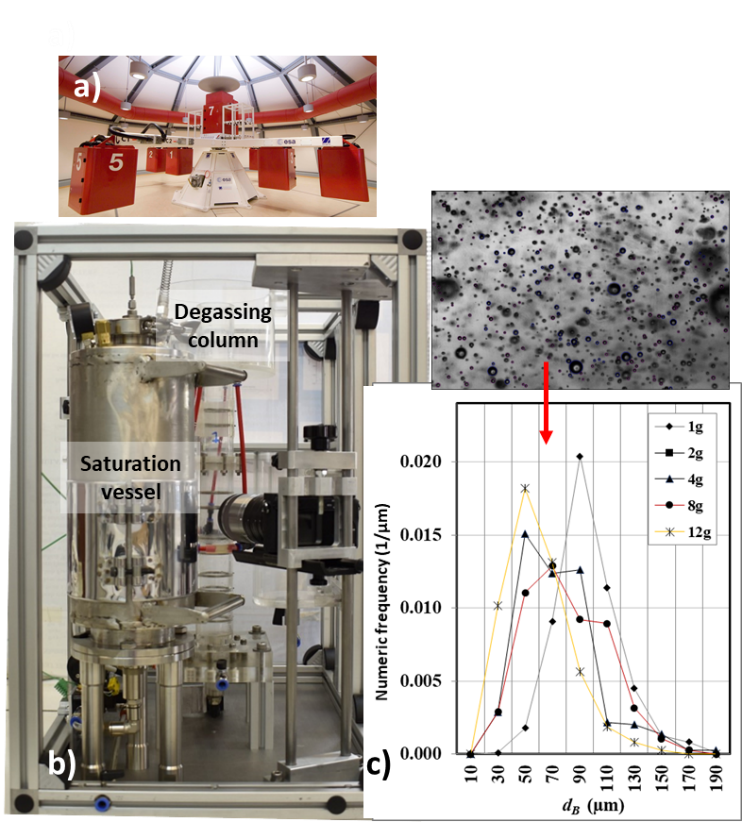Contant Person: R. Oikonomidou [rania.oik@gmail.com]
The term liquid degassing implies the formation of gas phase in a liquid volume as the result of liquid supersaturation with dissolved gas. The solubility of gases in liquids increases proportionally to the partial gas pressure. Therefore, when a gas saturated liquid passes through a nozzle, it decompresses and becomes supersaturated with gas. As a result, gas desorbs from the liquid phase in the form of bubbles. The technique of liquid degassing is applied in several industrial processes either to take advantage of the generated bubbles, or to remove dissolved gases from liquids. The utilization of degassing bubbles for the efficient removal of suspended solid particles from wastewater is the working principle of Dissolved Air Flotation technique. The sparkling taste of carbonated beverages and the efficient spray atomization is attributed to liquid degassing. On the other hand, degassing bubbles promote wines oxidation and bacteria growth in crude oil. They also accelerate pumps aging and cause imperfections in plastic molds, coatings etc. Apart from terrestrial applications, liquid degassing participates in several applications of space missions (e.g. liquid propellants storage and combustion, cooling of microelectronics, lubrication systems).
The size of degassing bubbles is often crucial for the efficiency of applications. In order to control bubble size, researchers studied the effect of several functional parameters (nozzle geometry, liquid physical properties, liquid flow rate, supersaturation etc.) on bubble growth. In terms of the present research project (that is funded by the European Space Agency, NPI 4000108790/13/NL/PA), the dynamics of degassing bubbles are examined under the effect of different dissolution pressures (partial gas pressure prior to injection), gravitational accelerations and liquid flow rates. For this study, a combination of optical and electrical diagnostics are applied. A high resolution still digital camera is used to investigate the time evolution of degassing bubbles size, population and velocity along the height of a degassing column. A unique patented electrical impedance spectroscopy technique (IVED) equipped with a multiplexer, is used to examine the volumetric gas phase distribution along the column height and thus characterize the resulting two-phase flow.

Figure 1: a) Degassing column equipped with optical and electrical diagnostics, for two phase flow characterization at 4 different measuring channels, b) The resulting volumetric gas fraction (ε) time evolution along the column height, under 300kPa dissolution pressure and 0.21 L/min liquid flow rate.

Figure 2: a) Large Diameter Centrifuge facility of ESA/ESTEC for the imposition of artificial hypergravity, b) Small-scaled degassing experimental set up for tests in hypergravity, c) Size distribution of degassing bubbles under a wide range of gravitational accelerations, at 300kPa dissolution pressure.

